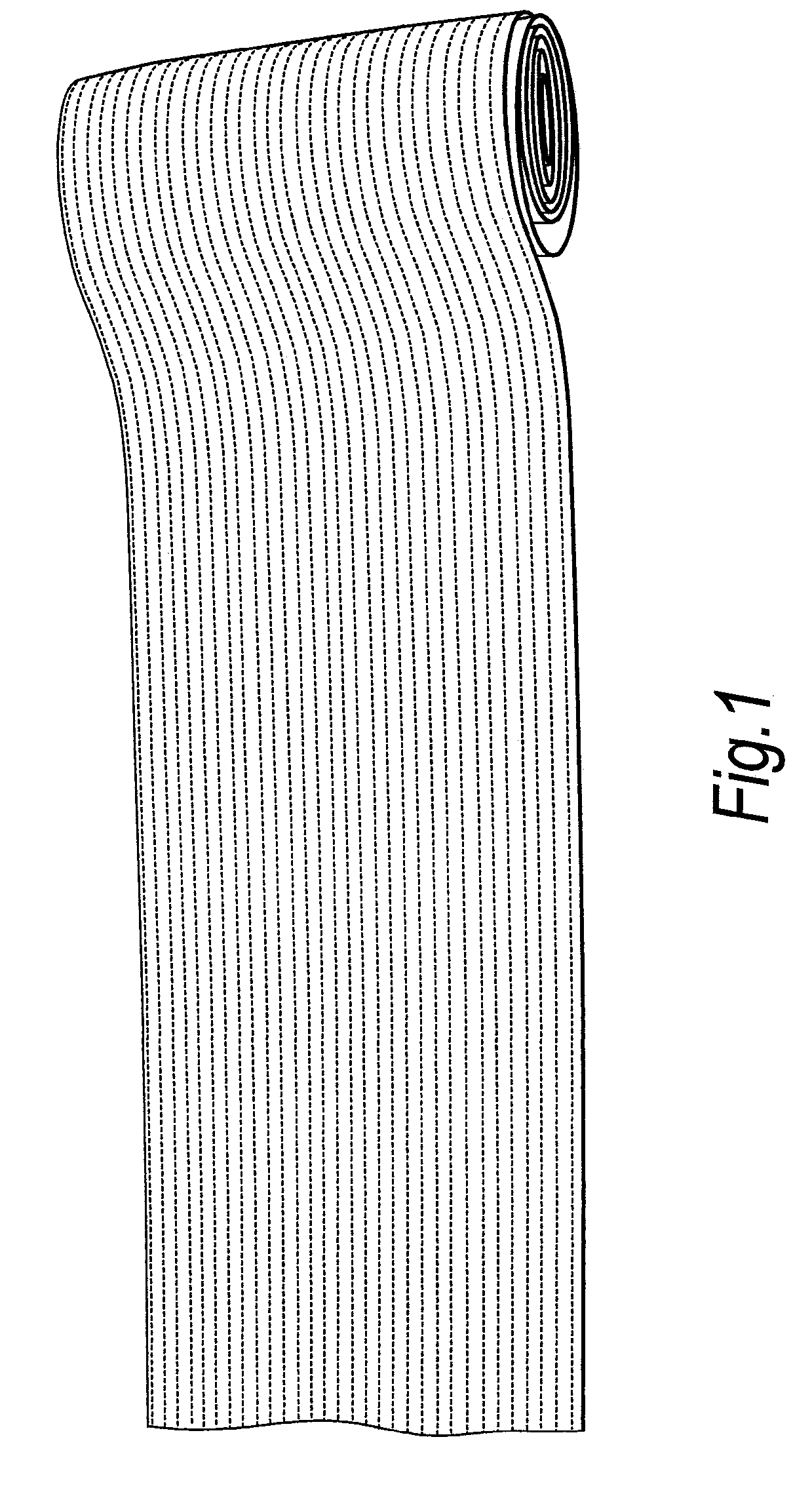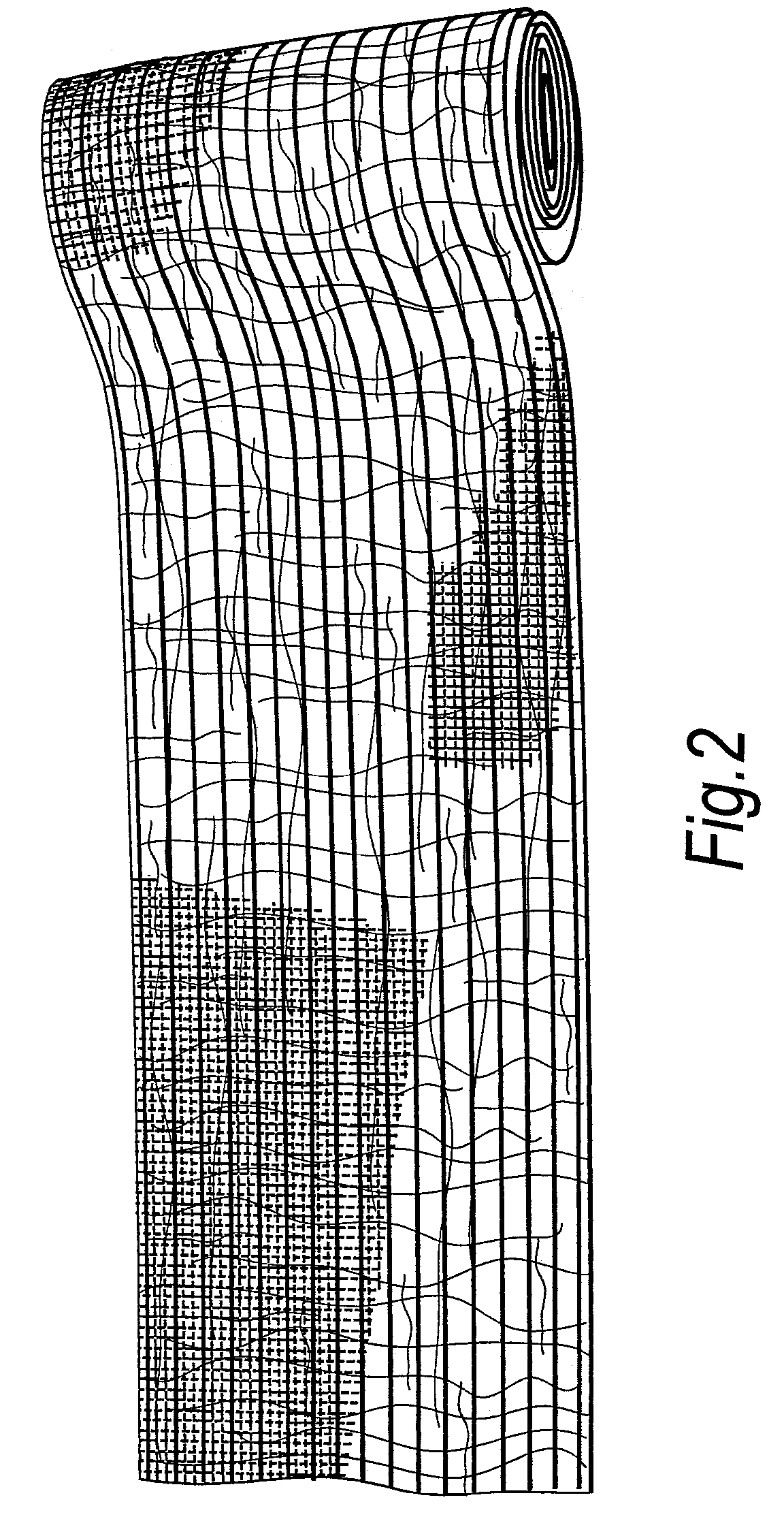Wound dressing material
a wound dressing and wound technology, applied in the field of wound dressing materials, can solve the problems of limited use of large wound dressings, inability to fix dressings and maintain contact with wounds, and inability to effectively treat large wounds, etc., and achieve the effect of ensuring adequate integrity and easy placement in intimate contact with wounds and surrounding skin
- Summary
- Abstract
- Description
- Claims
- Application Information
AI Technical Summary
Benefits of technology
Problems solved by technology
Method used
Image
Examples
example 1
[0031]A material in the form of a roll was made as described for the bandage of FIG. 2. A roll was also made in the same manner except that the stitch bonding was omitted. A dressing was cut from each roll of size 8 cm×8 cm and each was wetted with 7.5 mls of water. The gelled dressings were then measured to give the results below.
[0032]
Stitched DressingUnstitched Dressing(cm2)(cm2)Dry6464Wet56.246.9
These results show the contraction of a dressing made from a small unstitched quantity of material. The dressing made from stitched material suffered far less contraction.
example 2
[0033]A roll of material was made by the method described for the material of FIG. 2. The roll of material was 20 cm wide and was cut into lengths 40 cm long. Those lengths were joined together at their long edges by overlapping the edges and stitching through both thicknesses. Shapes suitable for making garments were then cut from the material and sewn together to make three dimensional garments, such as gloves, vests and face masks, particularly, for use on burns.
PUM
| Property | Measurement | Unit |
|---|---|---|
| lengths | aaaaa | aaaaa |
| elongation | aaaaa | aaaaa |
| size | aaaaa | aaaaa |
Abstract
Description
Claims
Application Information
 Login to View More
Login to View More - R&D
- Intellectual Property
- Life Sciences
- Materials
- Tech Scout
- Unparalleled Data Quality
- Higher Quality Content
- 60% Fewer Hallucinations
Browse by: Latest US Patents, China's latest patents, Technical Efficacy Thesaurus, Application Domain, Technology Topic, Popular Technical Reports.
© 2025 PatSnap. All rights reserved.Legal|Privacy policy|Modern Slavery Act Transparency Statement|Sitemap|About US| Contact US: help@patsnap.com


